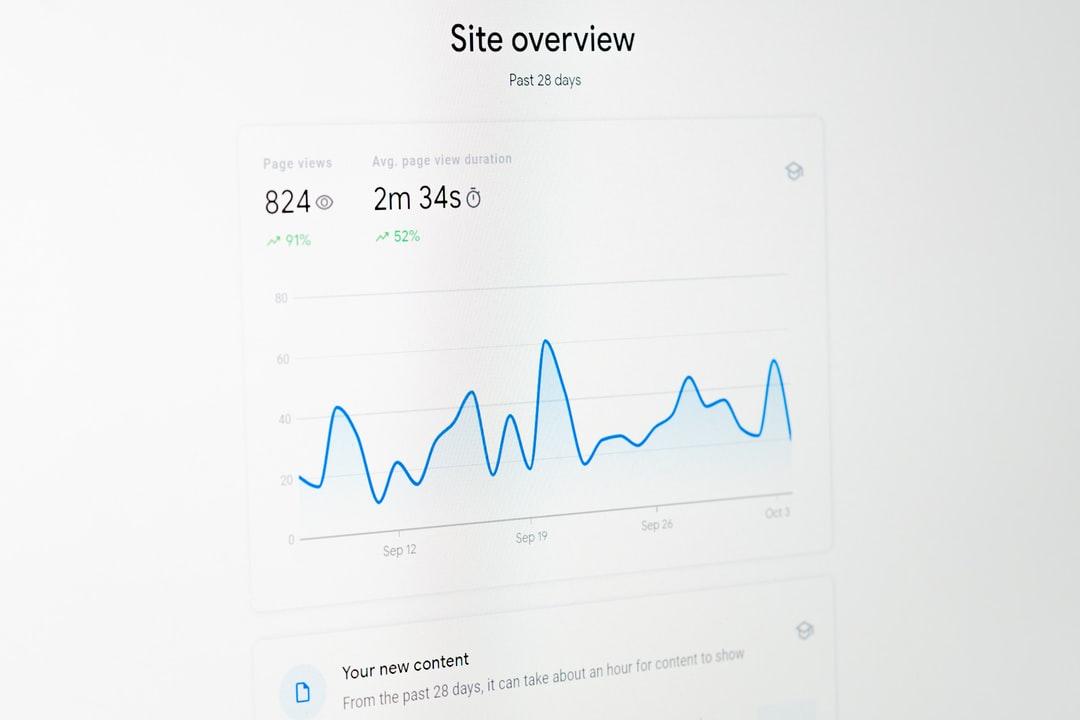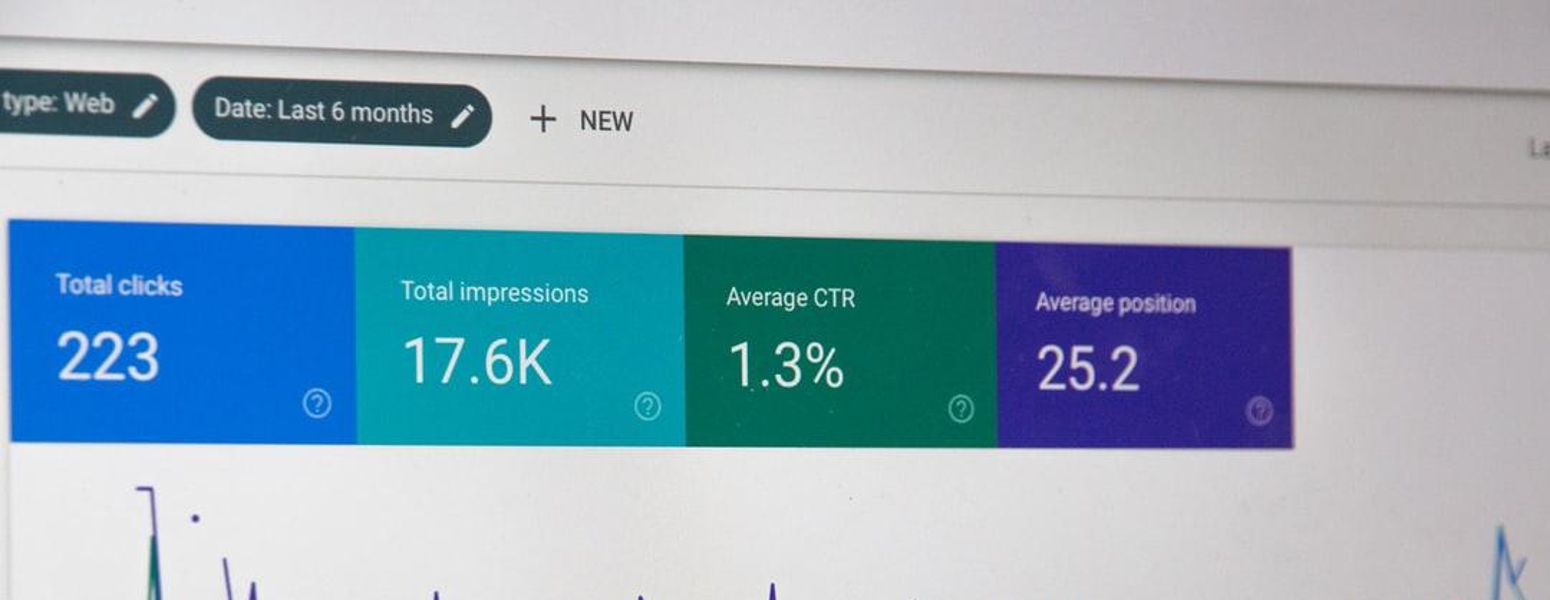In the language of the internet, a bounce occurs whenever a user leaves the first page of your website before they interact with any other page. The bounce rate is one of those metrics that can either make or break a website's success. When you're looking at your analytics, the bounce rate is a leading indicator of your website's success.
A high bounce rate often means lost revenue for your business, since it is typically a sign users aren’t engaging with whatever you're offering. This can be caused by things like:
- Confusing website layouts with too many clicks
- Lack of personalization on the website
- Slow page load time or an overall poor user experience
- Badly written, boring content on your landing page
Whatever the cause, you’ll need to know and develop a clear understanding of what bounce rates are if you expect to improve your website. Read on to find out how you can use Google Analytics to make that happen.
Calculating Your Bounce Rate
Bounce rates can be calculated in several ways, depending on your preferred reporting method. The two most common are:
- By Website Page Views: How many users visited and exited your site without accessing a second page view? Did the user just hit a page and then leave without triggering another hit on Google Analytics? This figure is calculated by taking the number of bounce sessions and dividing it by the total number of sessions that your site registers.
- By Unique Session Length: This is a measurement of how long users spend on every single page. Session lengths begin counting from the moment a user lands on a page until they either navigate back to where they came from or click on a link. Depending on your business, unique session length can be an even more helpful way of judging how effective your website is than page views.
Google Analytics gives you the option of further refining the variables you use to measure bounce rates. To get a clearer view of how your site is performing, you can weigh factors like:
- The total time spent on the first page of your website
- The total number of visits from unique users
- The number of pages a unique user visits, whether on their first visit or a later one.
Viewing Bounce Rates Inside Google Analytics
Google Analytics is more than just a tool for improving bounce rates. Used properly, GA can help you redefine the entire user experience from the ground up. This helps your visitors find what they’re looking for faster and more efficiently.
To get started, access your GA dashboard and go to Behavior (left side of the dashboard). You’ll see a falling menu giving you access to a tab called Site Content. Click that and you’ll see:
- All Pages
- Content Drilldown
- Landing Pages
- Exit Pages
From the Landing Pages tab, you’ll be able to access all of your respective landing pages and see their bounce rates. This will let you drill down further and compare how each page is performing against the others.
You’ll see to the right a Bounce Rate header, which will give you a percentage bounce rate for each landing page you’ve registered. You’ll also see tabs for the Average Time On Page and Page Views, which can give you more information about page performance.
Shorter session lengths mean that, for whatever reason, website visitors aren’t staying on your page for very long, which could mean some adjustments are in order.
The Site Content tab of Google Analytics provides a wealth of information for your website, including:
- Total Visits
- Total Bounce Rate
- Total Page Views
- Individual Bounce Rate
- Bounce Rate Percentage
- Average Session Length
- Unique Users
- Unique Sessions
- Total Unique Bounce Sessions

Bounce Rates and Exit Rates: What’s the Difference?
It’s easy to confuse bounce rates and exit rates. Bounce rates trigger when users leave your page directly back to the page they initially entered from. Exit rates, on the other hand, measure a user’s departure from your website without respect to anything else they’ve done during their session. In other words-
- Bounce Rate: A website’s bounce rate divides the total number of page views by the times a user enters and exits in a single session. Bounces happen when someone enters your website and immediately leaves without interacting with your site in any way.
- Exit Rate: This is a broader metric. It compares the total number of users who leave your website, regardless of how much they interact with your site, to the total amount of views for that particular page.
It’s easy to confuse these two metrics because they’re very similar to one another. Exit rates can help you develop a broader understanding of how people view your page as a whole, whereas bounce rates are a more focused metric. If you have a high bounce rate, it might mean people find nothing at all to hold their attention on your site. This, however, might not be the case for a high exit rate. Taken in unison, both of these metrics can help you determine the most popular pages on your site, improve traffic flow, and decide which pages to prioritize (because they’re visited more often).
At Scorpion, for instance, we look at both the average bounce rate and exit rates to help us determine how well your website is keeping a user’s attention. If your exit rate is high, it often means that a website visitor did indeed find something of interest to them, even though it might not have been enough (at that time) to convert them. Such users are more likely to return for a follow-up session.
Knowing this distinction plays a key role in understanding why you need to monitor those bounce rates.
Why Tracking Your Bounce Rate Is So Important
The bounce rate on your Google Analytics dashboard can tell you specifically how users are spending their time on your website. It can help you predict which users are likely to come back and which users simply have no interest in your offering. Your bounce rate can help you make important decisions about how to improve your website design and layout.
Consider Search Engine Optimization (SEO). Proper SEO means optimizing your website to attract new prospects and motivating them to engage with your services, even if that doesn’t necessarily mean making a purchase today. You can use the average bounce rate to identify which of your website pages are attracting the most attention, which in turn can help you better understand how and why people are finding your website. That’s valuable intelligence for reshaping your offering around your customers’ specific interests.
Your bounce rates can tell you which of your pages need improving and which you should leave alone for now. As you optimize your website over time, bounce rates provide a baseline performance metric that you can return to often to see whether your changes are having an impact. It tells you how people are navigating your site and where they’re either getting lost or finding bread crumbs that spark their interest.
A high bounce rate is one of the first things we look for at Scorpion to tell us when something about your website needs to be changed. Learning how to understand bounce rates and use them to your advantage can help you generate more valuable page views, increase conversions, and create more revenue for your online business. It’s an important component of any digital marketing strategy.
Tips to Optimize Your Website Bounce Rates
Improving your website's bounce rate is a matter of balancing usability, content, and messaging. By taking a closer look at which pages on your site are performing well and which ones aren’t, you can create a powerful online strategy for optimizing your website and getting more traffic and conversions. The user experience of your website is a part of a good bounce rate. The ways to do it are straightforward:
Create Better Content
You should ensure that the content you put on your website is interesting and relevant to your target audience. Whether you're creating a landing page or a blog post, your content needs to be high-quality, engaging, and helpful. You also want to make sure that your blog posts are clear and easy to follow. For example, use bullet points or numbered lists whenever it makes sense. They can help your visitors quickly scan through your content and find the answers to their questions.
“Scannability” is a virtue on the internet. Use descriptive titles and subheadings, ensuring that your content contains all of the essential information that your users are looking for. This requires a good understanding of your audience and what they want.
Moreover, you want to “grab” visitors with snappy and effective calls to action (CTAs). Consider having at least two (at minimum) per page. Having a primary and secondary CTA makes it more likely that users will engage with your content in a meaningful way, even if that means signing up for your newsletter.
Use Better Images
You should also include at least one photo with every piece of content you publish on your site. Photos not only add visual interest to your website, but they can also serve as a powerful call to action. If you include an image of a product, for example, visitors are more likely to click on that link and purchase.
Don’t use stock photos that have nothing to do with the subject of your page. Instead, create your own pictures and images that are relevant to the content on your site. A picture of a beach wouldn’t work very well if your page topic is “urban landscaping,” would it?
Maximize Your Messaging
Your website’s messaging needs to be clear and concise. Visitors should easily understand what you're offering. Within moments of landing on your page, they should know what to expect and what they can get out of visiting your site. Strong copy is the key to making that happen. As you write your copy, consider the following questions:
- Who am I writing for?
- What do they want?
- What can I do to help them?
Avoid generic terms. Use specific words that appeal to your user base. Look up your chosen keywords and make sure you're using them in your copy. The more specific your copy is, the more relevant it will be for your visitors.
The key to making this work is to know your audience. In addition to Google Analytics, you can also use services like Google Keyword Planner to see what other keywords businesses in your field are ranking for and try to rank for them (or similar ones) yourself. If any other sites are linking to your page, look at what keywords they’re using to help guide your own copy. This is similar to the strategy we use here at Scorpion when helping our clients optimize their online messaging.
Optimize Your Branding
Branding is an important part of designing a successful website. Make sure that your brand colors and visual style match the rest of your site. Also, try not to clutter your site with too many logos or images. Use these to highlight important features and content instead of using them to distract visitors from the page’s main idea.
If people recognize your logo or brand name, they’re more likely to trust you and return to your site. Use your website as a place to show off your brand, including as many of your company’s logos, taglines, or images as reasonable. The more your brand appears on your website, the better and more consistent you will appear to potential clients. Just beware to not clutter someone's screen by overstuffing your branded content.
Get Help Improving Your Bounce Rate
Google Analytics helps you improve your bounce rate by providing actionable data that shows you exactly how users are interacting with your website. An important part of using Google Analytics is being able to view, measure, and analyze user data for yourself. With the right tools available, you can take guessing out of the game and act based on hard data. Having the data at your fingertips can save you a lot of time and effort when you need to make changes to your website to reduce bounce rate.
With that said, managing bounce rates and other tools via Google Analytics can be a lot to handle when you’re trying to run a business at the same time. Having an experienced digital marketing team at your side can also be a great way to get a good bounce rate, optimize your website, and generate the traffic you need to stay in business.
At Scorpion, we use a variety of proven marketing methods, including A/B split testing, to get your bounce rates where they need to be. Contact us today to get started.
Our team will set you up with a great website and create content that will keep your audience on your site to reduce bounce rate.
Let's talk about bounce rate.Schedule a consultation. Talk To Us





